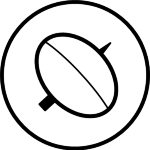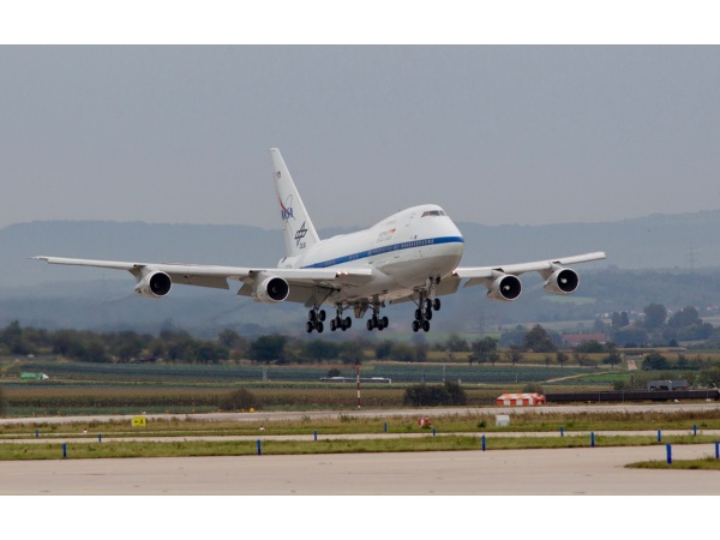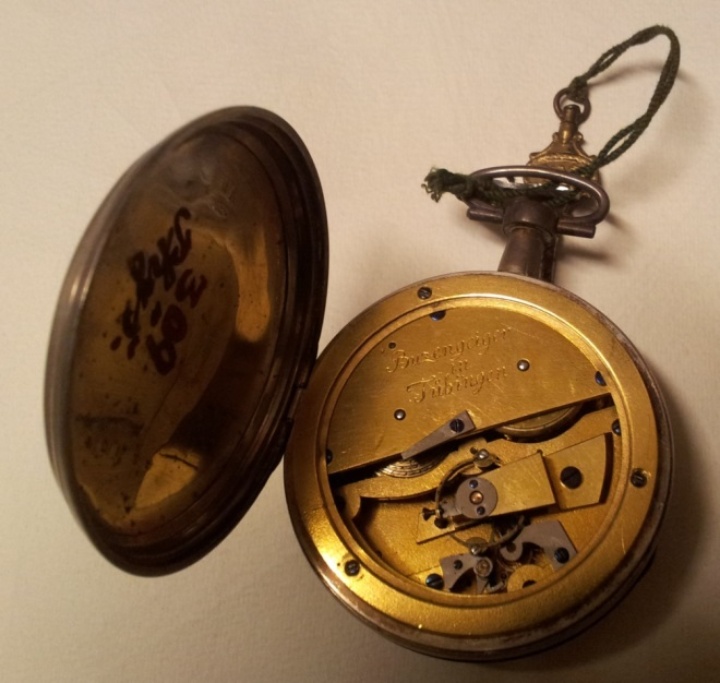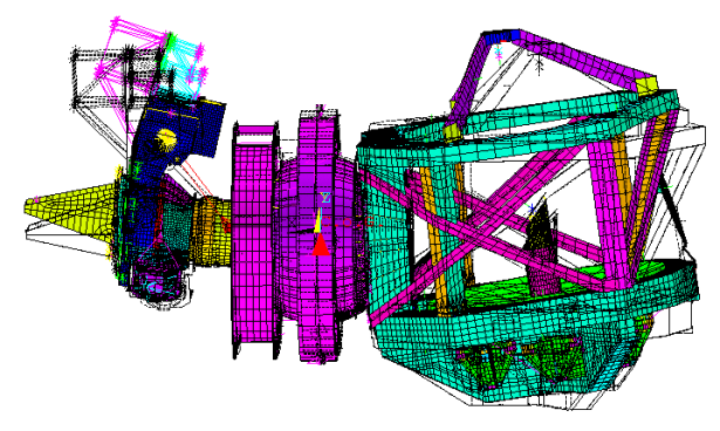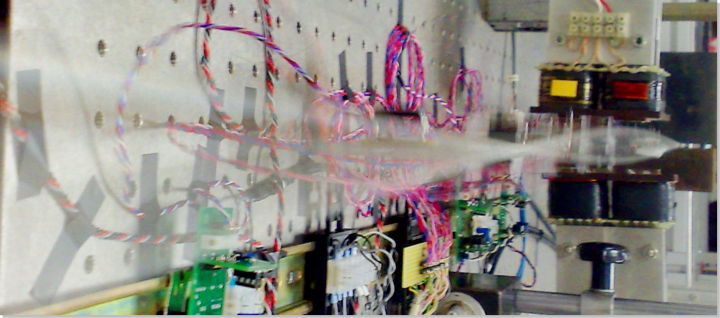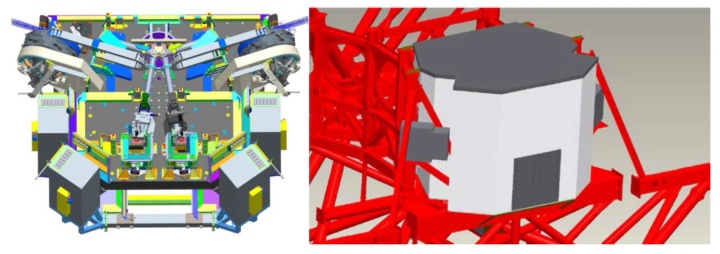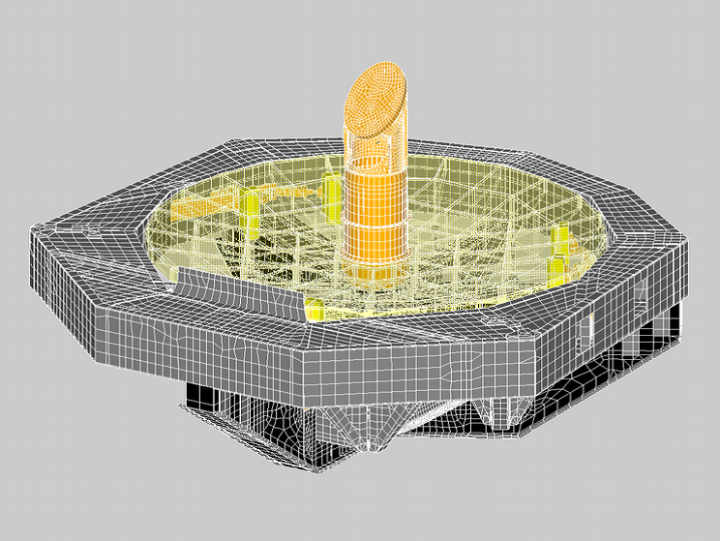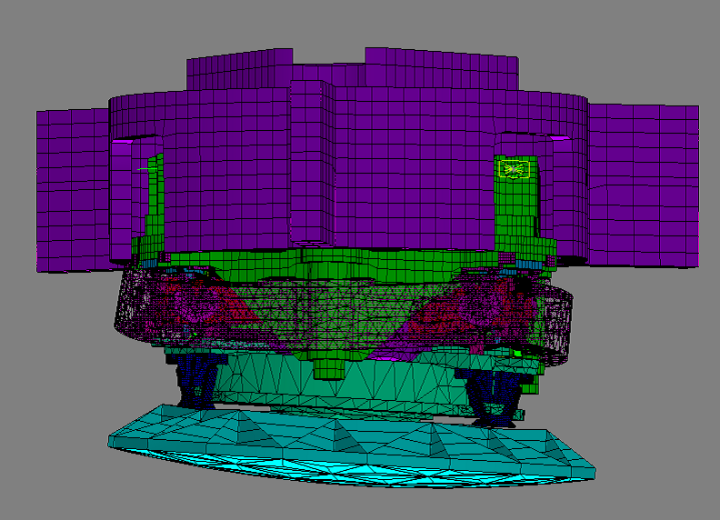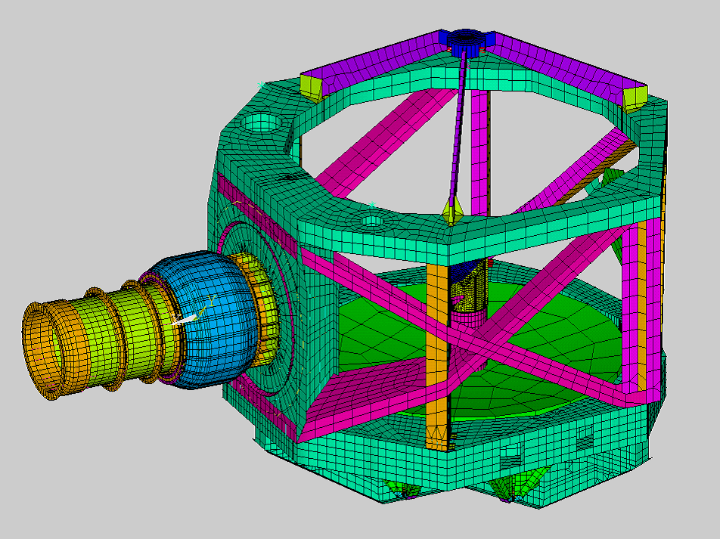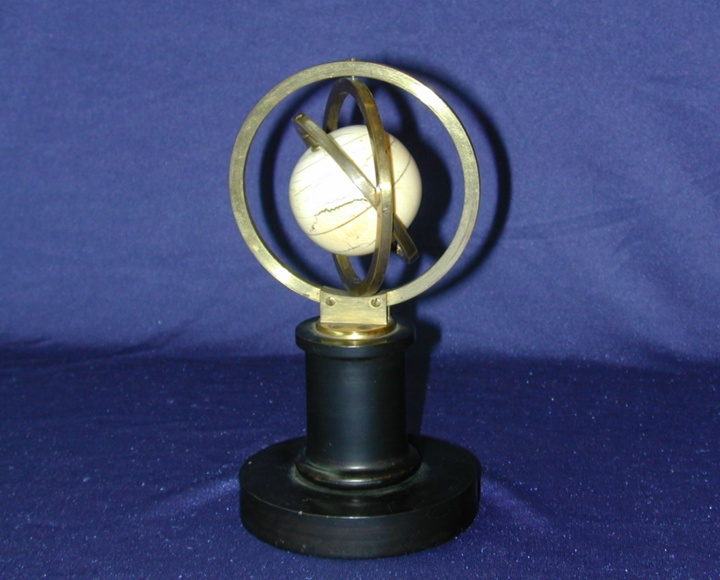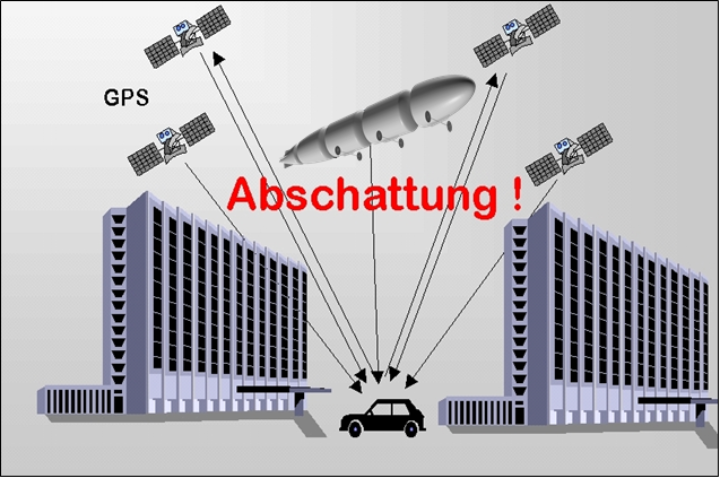Open Positions
Unfortunately no vacancies at the moment.
Open Exam Papers
The Stratospheric Observatory for Infrared Astronomy (SOFIA) was an airborne observatory with a large infrared telescope. At altitudes up to 14 km, it performed astrophysical measurements at wavelengths of 0.3 to 1600 µm. In order to stabilize the telescope in flight, the telescope movement was captured with an inertial measuring unit (IMU). This device consists of three accelerometers and three fiber optical gyros. The IMU is to be re-measured as part of the project follow-up.
Task:
- Familiarization:
-
literature studies,
- examination of the use of existing telescope data.
-
- Conception of the re-measurement taking into account:
- misalignment angles of the IMU sensor axes,
- geographic position und elevation of the telescope,
- structural elasticity,
- temperature effects.
- Performance of re-measurement tests.
-
Simulative measurement of the installation attitude of the IMU.
- Documentation and presentation of the results.
Prerequisites:
-
Student in the field of engineering (aerospace engineering,
mechatronics, technical cybernetics, mechanical engineering). -
Independent and structured way of working.
-
Knowledge in metrology, programming, Matlab.
Reference:
Harms, F.: A contribution to characterizing and calibrating the pointing control system of the SOFIA telescope. Stuttgart, Univ., Diss., 2009
Supervisor:
The collaboration between J.G.F. Bohnenberger (1765 - 1831), Professor of Mathematics, Physics and Astronomy at the University of Tübingen, and his most important instrument maker, the University Mechanics J.W.G. Buzengeiger (1778 - 1836) is an interesting chapter in the history of technology. Triggered by the discovery of an original copy of the "Bohnenberger Machine" at the Kepler-Gymnasium Tübingen, the historical research on Bohnenberger's work had received a new impulse, which increasingly turned its attention to J.W.G. Buzerngeiger: Bohnenberger's scientific work would have been different without the support of Buzengeiger, and the fact that Buzengeiger was able to conduct a Europe-wide trade in his instruments was largely due to the scientific contacts of Bohnenberger.
In recent years, a number of unevaluated historical documents have been found that allow an insight into the living and working conditions of university mechanics. These documents should be indexed, transcribed as far as necessary and compared with the known historical context.
Task:
- - Archive research,
- - identification and transcription of essential documents,
- - comparison with existing state of knowledge,
- - evaluation of the information compiled.
Prerequisites:
- - Advanced GNT study (history of science and technology).
Reference:
Trierenberg, A.: Die Hof- und Universitätsmechaniker in Württemberg im frühen 19. Jahrhundert. Stuttgart, Univ., Diss., 2013
Supervisor: Prof. Dr.-Ing. habil. Jörg F. Wagner
Selection of Completed Exam Papers
The Stratospheric Observatory for Infrared Astronomy SOFIA is a joint German-US research project to give astronomers access to infrared wavelengths that are unobservable from the ground. It consists of a heavily modified Boeing 747SP with a large reflector telescope. The telescopic structure must ensure high directional stability under extreme environmental conditions. In order to achieve the desired directional stability, a method for estimating structural motion using fusion of various measurement methods (inertial sensors, strain measurements) is investigated.
The arrangement of the sensors plays an important role for a good motion estimation. In the work, the placement of strain gauges with respect to the vibration modes will be investigated, which affect the optical properties. This forms the basis for the development of a strain kinematics model for a state observer.
Task:
- Familiarization with the existing Finite Element model of the
SOFIA telescope structure,
- generation of transient analysis results of the telescope structure
for the simulation of strain measurements,
- evaluation of the placement of DMS based on the observability
and independence of the telescope's own modes.
Prerequisites:
- Knowledge of Finite Elements and structural metrology.
Inertial sensors and GPS receivers are traditionally used for integrated navigation and motion measurement systems based on a rigid body model. In the context of the work it shall be shown by means of practical experiments that the extension of integrated motion measurement systems to continuums, e.g. a flexible aircraft wing, is possible.
Using the example of a vibrating flexible beam as a simplification of a wing half, gyroscopes for measuring the rotation rate and accelerometers are used to estimate the beam movement. As so-called aiding sensors lasers (to measure the distance to a reference surface) and strain gauges are used. The measurement data fusion is performed by a Kalman filter.
Task:
- Assembly and optimization of a test stand,
- calibration of the sensors,
- optimization of sensor positions,
- test realization and recording of the measurement results,
- programming the estimation algorithm (Kalman filter),
- evaluation of the measurement results based on the created estimation model.
Prerequisites:
- Knowledge of structural dynamics and structural metrology.
The Max Planck Institute for Astronomy (MPIA) in Heidelberg is responsible for the construction and commissioning of the interferometric experiment LINC-NIRVANA (LN) at the Large Binocular Telescope (LBT). The instrument must be protected from external environmental influences by a housing. At the same time, the case design must be lightweight (because the housing is is moving), robust and walkable, precise (because of limited space), and modular (for a flexible instrument access).
Task (in cooperation with the MPIA):
- Design based on existing CAD data for instrument and telescope,
- selection of the necessary materials and semi-finished products,
- clarification of the interfaces to the telescope, measures for vibration decoupling,
- Finite Element analyzes (static strength analysis, self-contained deflection,
wind loads),
- detailing of the construction including drawing production.
Prerequisites:
- Knowledge of Finite Elements and structural mechanics.
The Stratospheric Observatory for Infrared Astronomy (SOFIA), a modified Boeing 747SP with integrated reflector telescope, serves for astronomical observations in the infrared and submillimeter wavelengths above the disturbing troposphere. For the image quality of such an observation system the shape and orientation of the optical elements are decisive. The elements include at SOFIA the primary mirror made from Zerodur, and being suspended in a carbon fiber structure.
During the continuous development and improvement of the observatory, mainly the low-order optical aberrations such as the image motion by vibration of the mirror elements have been studied. The improvement of the image stability now allows the occurring higher-order errors to come to the fore. Using an updated finite element model (FEM) the work will investigate the influence of static deformations due to dead weight and thermal expansion. Furthermore, the optical effect from telescope eigenmodes with significant primary mirror deformations is to be investigated.
Task (in cooperation with the German SOFIA Institute):
- Familiarization with the mechanical structure, the FEM and experimental
measurement data from production and previous flights,
- training in optical aberrations and their causes,
- processing the FEM for load cases due to thermal expansion,
- performing simulations with respect to static optical aberrations using
ray-tracing software
- further investigations on dynamic deformations.
Prerequisites:
- Knowledge of Finite Elements and structural mechanics.
The Stratospheric Observatory for Infrared Astronomy (SOFIA), a modified Boeing 747SP with integrated reflector telescope, serves for astronomical observations in the infrared and submillimeter wavelengths above the disturbing troposphere. An integral part of the telescope system is the secondary mirror mechanism (SMM). This actively controlled component tilts the secondary mirror in rapid succession back and forth in order to align the detector field of view to different positions in the sky (Chopping).
To better understand the structural dynamics behavior of the SMM, a finite element model (FEM) was created. At the same time, modal tests were carried out on the actual flight hardware in the laboratory. The work should deal with the comparison of measurement and FEM simulation data. With an improved FEM, further simulations of the dynamic behavior will be carried out under the excitation of the chopping movement.
Task:
- Familiarization with the mechanical structure (CAD model), the FEM and
experimental measurement data of the SMM,
- reconditioning of the topological structure of the FEM and its components,
- identification of FEM parameters for the comparison of the experimentally
determined modal properties,
- develop an improvement strategy for the FEM,
- extended simulation calculations.
Prerequisites:
- Knowledge of Finite Elements and structural mechanics.
The Stratospheric Observatory for Infrared Astronomy (SOFIA), a modified Boeing 747SP with integrated reflector telescope, serves for astronomical observations in the infrared and submillimeter wavelengths above the disturbing troposphere.
For an improved understanding of the dynamic behavior of the elastic telescope structure, the vibration states occurring in scientific operation will be simulated with the aid of a Finite Element model (FEM). In order to be able to include nonlinear effects of the structure, it is necessary to modify the existing model. This work deals with the applicability of nonlinear contact elements for the characterization of bonded joints in the telescope's carbon fiber structure.
Task:
- Literature research on friction models and nonlinear contact elements as well as
their application in Finite Element simulations,
- implementation of contact elements at the joints in the ANSYS-FEM of the
"Metering Structure" of the SOFIA telescope system,
- test calculations and parameter studies on the applicability of the element types
used.
Prerequisites:
- Knowledge of Finite Elements and structural mechanics.
J.G.F. Bohnenberger was one of the most important German natural scientists of the 19th century and was the scientific director of the 1818 started Württemberg state survey. While his name is well-known to national and international geodetic and astronomical experts, he has largely been forgotten by physicists and mathematicians over time. Accordingly, the historical reappraisal and appreciation of his scientific work has been correspondingly unbalanced. This is particularly evident in his invention of the gimbal-mounted gyroscope, the Machine of Bohnenberger, which formed the basis of Foucault's important work on gyroscopic technology, thus fundamentally promoting the development of navigational gyroscope instruments. Therefore, the work should provide the basis for a more complete account of Bohnenberger's work and illuminate the background of Bohnenberger's Machine.
Task (in cooperation with the Institute of History, Dept. GNT):
- Extensive literature research,
- research on the estate of Bohnenberger,
- evaluation and interpretation of the documents found,
- focus: Machine of Bohnenberger, Bohnenberger's instrument maker
G. Buzengeiger.
Prerequisites:
- Advanced GNT study (history of science and technology).
The signals of various satellite navigation systems (GPS, Galileo, GLONASS) and their supplements (EGNOS, etc.) are often shadowed by buildings in urban areas. As a result, the usability of these systems for road traffic is severely limited. However, the use of additional signal transmitters placed on high-altitude platforms could compensate for this effect by significantly increasing the availability of satellite navigation signals.
The aim of the work is therefore to use simulations to investigate the potential for improvements resulting from the use of high-altitude platforms over urban areas.
The simulation is based on a 3D urban model being used to calculate shading angles along selected routes. With the help of a satellite simulation program, the availability of the individual satellite systems is to be determined without and with additional signals provided by altitude platforms. From the results of the simulation further conclusions on the number and effective positioning of the platforms are to be drawn.
Task:
- Selection and utilization of the 3D urban model,
- import of the 3D data into a GPS simulation software,
- definition of simulation scenarios,
- investigation of the influence of number and position accuracy of the platforms.
Prerequisites:
- Basic knowledge of GPS.
Contact
